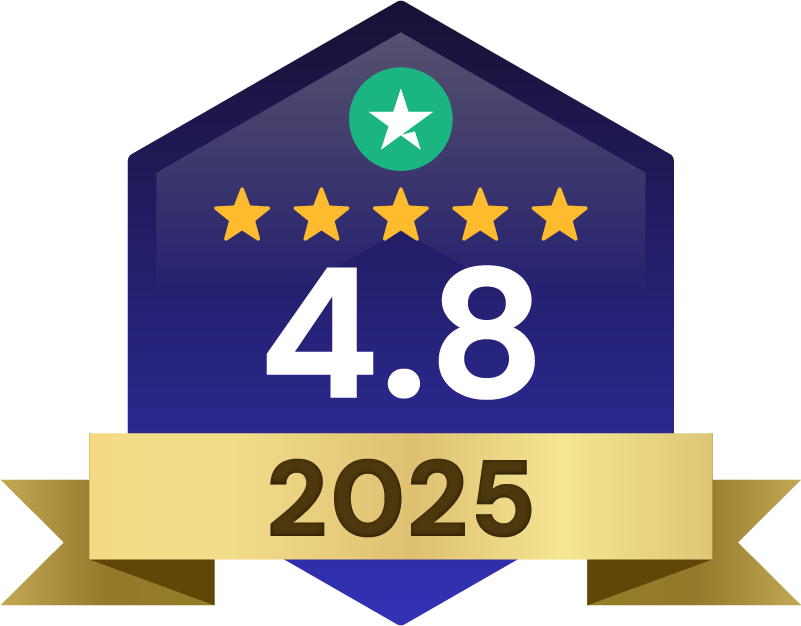Learn how to develop effective pages with attention-grabbing headlines, immersive visuals, and persuasive copy. This guide also highlights the importance of using lead capture forms and optimizing for mobile, leveraging AgentFire's tools for seamless customization.
Content Marketing Lead Generation
Real estate professionals who prioritize creating effective landing pages often see significant improvements in their online marketing results. These pages utilize targeted information, captivating visuals, and clear calls to action to establish trust, showcase expertise, and guide visitors toward making contact.
Designing a high-performing real estate landing page requires understanding the key elements that drive conversions and implementing best practices for optimal results. This article will walk you through the process of developing a landing page that delivers.

What is a Real Estate Landing Page?
A real estate landing page is a dedicated webpage designed to capture the interest of potential clients and encourage them to take specific action. Unlike a general website page, it concentrates on a single objective, such as scheduling a property viewing, requesting a home valuation, or accessing a resource.
Landing pages play a crucial role in real estate marketing by providing a platform to highlight properties, emphasize unique features, and gather visitor information for future outreach. By presenting valuable content or incentives in exchange for contact details, these pages help build a database of interested leads.

Elements of a High-Converting Real Estate Landing Page
To transform visitors into leads, a landing page should incorporate:
- Attention-Grabbing Headline: A captivating headline that clearly communicates the page’s purpose.
- Immersive Visuals: Professional images and videos that showcase the property’s best attributes.
- Benefit-Focused Copy: Clear, persuasive text that highlights unique selling points and guides visitors towards action.
- Prominent Call-to-Action (CTA): A visible and enticing CTA button that encourages visitors to take the next step.
- User-Friendly Lead Capture Form: A simple form that collects visitor information in exchange for a valuable offer or resource.
By incorporating these elements, real estate professionals can develop landing pages that capture attention and motivate visitors to engage.

Step-by-Step Guide to Creating a Real Estate Landing Page
1. Define Your Goal and Audience
Begin by establishing a clear objective for your real estate landing page. Perhaps you aim to attract potential buyers by highlighting a property’s standout features, or maybe your goal is to promote a special offer for first-time homebuyers. Having this primary purpose will help you align your content, visuals, and actions to guide visitors toward your desired outcome.
Understanding your target audience is equally important, as it informs how you craft your approach. Consider the following factors:
- Demographic Information: Characteristics like age, income, and lifestyle can influence which properties or services resonate with your audience.
- Geographic Targeting: Determine whether you are focusing on people in a specific area or a broader region. Customizing your message to align with local market conditions can enhance the appeal of your content.
- Level of Interest: Assess whether your audience is in the early stages of research or ready to make a decision. Tailoring your content to match their readiness can increase engagement.
- Pain Points and Needs: Identify common challenges they face in the real estate process and offer straightforward solutions. This builds trust and positions you as a reliable resource.
Defining your goal and understanding your audience lays a solid foundation for a successful landing page. This focus guides your design choices, content planning, and overall strategy, increasing your chances of converting visitors into leads.
2. Create a Compelling Headline
Your headline is the first element visitors encounter on your landing page, making it critical for capturing their attention. Ensure it is both engaging and informative, encapsulating the essence of your offer. Use direct and impactful language that resonates with your target market’s goals and challenges.
Here are some tips for crafting standout headlines:
- Emphasize Unique Features: Communicate what sets your property or service apart, such as “Experience Urban Elegance with Panoramic Views” or “Discover Tranquility in Our Exclusive Lakeside Retreat.”
- Provide Practical Insights: Share concise, actionable insights that appeal to potential clients, like “Explore Why Beachfront Living is a Smart Investment” or “Uncover the Benefits of a Spacious Family Home.”
- Evoke a Sense of Urgency: Encourage prompt action by emphasizing current opportunities, using phrases like “Secure Your Spot with Our Special Pre-Launch Offers.”
- Pose Engaging Questions: Capture your audience’s attention with questions that reflect their goals or desires, such as “Is Your Ideal Home Just a Click Away?” or “Ready to Elevate Your Living Standards?”
- Prioritize Clarity and Brevity: Ensure your headlines are concise yet informative, making them easy to understand at a glance. Strive for brevity to maintain clarity and impact.
Align your headline with the primary objectives of your landing page. Whether you’re promoting a feature-rich property or highlighting a time-sensitive offer, make sure your headline clearly communicates the core message. A well-crafted headline that speaks directly to your audience’s interests and needs can boost engagement and encourage them to explore your landing page further.

3. Use High-Quality Visuals
Visuals play a pivotal role in effective real estate marketing. Incorporating striking images and videos can significantly enhance the perceived value of the properties you’re showcasing. Investing in professional photography ensures your visuals are not only visually appealing but also accurately represent what the property has to offer.
To provide potential clients with a comprehensive understanding of a property, select a thoughtful mix of visuals. Include wide-angle shots to convey a sense of space and detailed images that highlight features like custom cabinetry or scenic views. Virtual tours or video presentations can also offer an immersive experience that helps buyers envision themselves living in the space.
Optimizing your images is essential to maintain a fast-loading page. Here are some tips:
- Compress Images: Utilize software like Adobe Photoshop or online tools to reduce file size without compromising quality.
- Choose Appropriate Formats: Opt for JPEGs for photographs and PNGs for images requiring transparency. Avoid larger formats like BMP or TIFF when possible.
- Optimize Image Dimensions: Resize your images to fit your page layout properly, avoiding excessively large files that could slow down your site.
With high-quality, optimized visuals, your landing page can captivate visitors, encouraging them to explore more about the properties you showcase. Compelling imagery is crucial for making a strong first impression, driving engagement, and generating interest in what you have to offer.

4. Write Persuasive Copy
Crafting effective copy is essential for a real estate landing page that resonates with visitors. This is your opportunity to clearly articulate the benefits of your properties and services, helping potential clients understand the value you provide. Concentrate on delivering clear and impactful messages that directly address your audience’s needs and aspirations.
To make your offerings stand out, highlight the unique features that distinguish your properties. Emphasize aspects like modern amenities, desirable locations, or architectural elegance that make your listings exceptional. Use descriptive language that helps your audience envision the lifestyle they could enjoy, making the property more relatable and appealing.
Present your information in a user-friendly manner. Utilize bullet points to present important details clearly. This approach ensures that key points are easily accessible and understandable. Consider using bullet points for:
- Listing Features: Showcase specific aspects of the property, such as “State-of-the-art fitness center” or “Expansive outdoor living areas.”
- Location Advantages: Explain the benefits of the area, like “Minutes from lively downtown dining” or “Nestled in a peaceful, family-friendly neighborhood.”
- Service Highlights: Highlight the exceptional aspects of your service, such as “Expert advice from seasoned professionals” or “Access to exclusive market insights.”
Your copy should go beyond informing—it should also inspire action. Use decisive language that encourages visitors to take the next step, whether by booking a visit, learning more, or reaching out. Align your copy with the interests and goals of your audience to create a persuasive narrative that encourages conversions on your landing page.
5. Include a Strong Call to Action (CTA)
Developing a compelling call-to-action is essential for converting visitors into active leads on your real estate landing page. It serves as a clear invitation, encouraging potential clients to engage with your offerings. Ensure your CTA is strategically placed, using precise language that aligns with the page’s primary objective.
For an effective CTA, consider phrases like “Book Your Exclusive Viewing,” “Get Detailed Property Info,” or “Claim Your Free Market Analysis.” These direct instructions help guide visitors on what to do next. Positioning your CTA near important sections or at decision points increases its visibility and accessibility.
Design your CTA button to stand out by using a visually contrasting appearance compared to other page elements. Utilize bright colors, distinctive fonts, and ample spacing to draw attention to your CTA. The button text should be concise and action-oriented, emphasizing the specific goal of your landing page. Ensuring your CTA is visually appealing and straightforward increases the likelihood that visitors will engage with it and become valuable leads.
6. Optimize for Mobile Users
Ensuring your real estate landing pages are optimized for mobile devices is crucial. With an increasing number of people browsing properties on their smartphones, delivering a seamless mobile experience is essential for converting visitors into leads. A well-optimized mobile page keeps users engaged and aligns with search engines’ preferences for mobile-friendly sites.
To ensure your landing page functions smoothly on mobile devices, consider these important points:
- Responsive Layout: Implement a design that adapts seamlessly to different screen sizes, providing an optimal viewing experience on any device.
- Fast Load Time: Optimize your page by compressing images, streamlining code, and enabling caching. A quickly loading page maintains user interest and reduces the likelihood of visitors leaving prematurely.
- Touch-Friendly Controls: Ensure interactive elements like buttons and links are adequately sized and spaced for easy tapping on touchscreens.
- Streamlined Forms: Keep forms concise by including only essential fields, making them quick and easy for mobile users to complete.
Prioritizing mobile optimization helps your landing page cater to the growing number of mobile users. This not only enhances usability but also demonstrates your brand’s commitment to providing a modern, user-centric experience.

7. Use Lead Capture Forms Effectively
Lead capture forms are essential for transforming visitors into interested prospects on your real estate landing page. These forms collect valuable contact information, enabling you to initiate follow-up conversations and nurture relationships with potential clients. Designing forms that are user-friendly and straightforward is crucial to enhance user experience and engagement.
When creating your forms, prioritize simplicity by minimizing the number of fields to only what is necessary. Too many questions can deter visitors from completing the form. Concentrate on gathering essential details like name, email, and phone number. If additional information is required, consider using optional fields or progressive profiling to collect more data over time.
Here are some strategies to encourage visitors to complete your forms:
- Logical Flow: Structure form fields in a way that is intuitive and easy for the user to navigate.
- Clear Field Labels: Use straightforward labels for each field to minimize confusion and ensure users provide accurate information.
- Guiding Graphics: Incorporate subtle graphics like icons or progress indicators to enhance visual appeal and highlight the submit button.
- Real-Time Feedback: Provide instant feedback on user input to help them correct any errors before submitting.
- Engaging Submission Prompt: Use action-oriented language for the submit button that emphasizes the benefit, such as “Receive Your Exclusive Guide” or “Access Special Property Listings.”
Prioritizing user-friendly lead capture forms and employing strategies to increase completion rates enhances your chances of conversion on your real estate landing page. Continuous testing and refinement will help you identify the form design that most effectively engages your audience and encourages them to reach out.

Tips on Maintaining and Optimizing Your Real Estate Landing Page
Developing a real estate landing page is just the beginning. To ensure its ongoing effectiveness, regular maintenance and optimization are essential. This involves updating content, experimenting with different elements, and analyzing performance data for informed improvements.
Regularly Update Content
Maintaining fresh and relevant content on your landing page is crucial for engaging visitors and improving SEO rankings. Establish a routine to review your page and verify that all information is accurate and up-to-date, including property descriptions, pricing, and promotions.
Incorporate new content that demonstrates your expertise and provides value to potential clients. Consider the following ideas:
- Market Updates: Share the latest insights into local real estate trends and statistics, empowering visitors to make informed decisions.
- Community Highlights: Offer detailed information about the neighborhoods you serve, emphasizing unique features, amenities, and community highlights that appeal to potential buyers.
- Client Testimonials: Showcase recent success stories or client feedback to build trust and credibility with your audience.
A/B Test Different Elements
A/B testing involves comparing two versions of a page element to determine which one performs better. This iterative process helps you optimize your landing page for improved results.
Concentrate on testing key areas, such as:
- Headlines: Experiment with different headline variations to identify the one that most effectively captures your audience’s attention.
- CTAs: Test various CTA button designs, including colors, sizes, and placements, to determine what generates the most clicks.
- Visual Content: Evaluate how different images or video layouts impact your visitors to identify which visuals resonate most effectively.
When conducting A/B tests, modify only one element at a time to accurately assess its impact. Integrate tools like CRMs to analyze the leads generated by each of your landing pages to see which one performs better

Track and Analyze Performance
To make data-driven improvements to your real estate landing page, it’s crucial to monitor and analyze key performance metrics. Set up analytics tools to track:
- Visitor Sources: Identify which channels drive the most qualified leads and adjust your marketing strategies accordingly.
- Engagement Metrics: Analyze metrics like bounce rate to understand visitor behavior and pinpoint areas for improvement.
- Conversion Success: Measure how frequently visitors take desired actions, such as submitting inquiries or scheduling viewings.
Regularly review your analytics data to identify trends and uncover optimization opportunities. Pay attention to pages with high exit rates or low engagement, and prioritize your efforts on enhancing these areas.
Set up specific goals in your analytics platform to track critical actions, like form completions or call requests. This will provide you with a clearer understanding of how your landing page performs and help guide your optimization efforts.
Are you ready to elevate your real estate business with a high-converting website? We invite you to book a demo with our team of experts. Let us help you create a powerful online presence that drives results and sets you apart from the competition.






